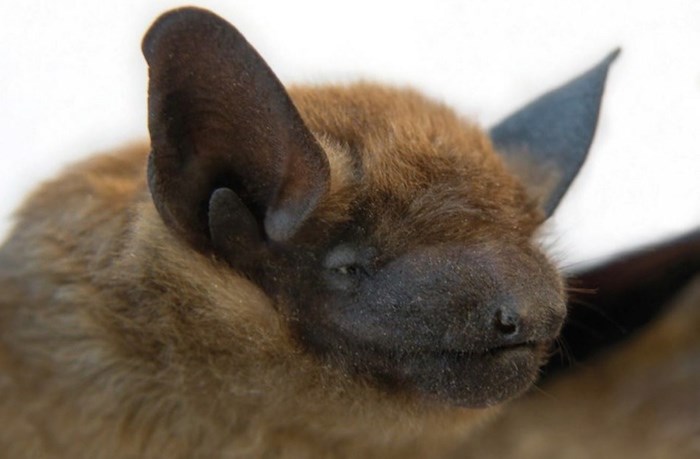Conservationists are concerned about a potential backlash against bats following a rare case in which a 21-year-old Parksville man died from rabies after a bat encounter.
Mandy Kellner, co-ordinator of the B.C. Community Bat Program, said bats already face a number of threats to their survival, so it’s crucial to have public support for conservation efforts.
 A brown bat. Photo by Kerry O’Gorman via Habitat Acquisition Trust
A brown bat. Photo by Kerry O’Gorman via Habitat Acquisition Trust
Experts, however, fear some people will want to get rid of bat colonies on their properties, despite the low risk of contracting rabies. The death of Nick Major on July 13 was only the second reported fatal case of human rabies in B.C. since the 1920s, and Kellner notes that less than one per cent of the province’s bats test positive for rabies.
“I think all of us who work in bat conservation are quite worried about it,” she said. “Bats already have all sorts of negative press and misconceptions.
“We feel like we spend a lot of time trying to educate people about all the positive things about bats and their importance in ecosystems and to agriculture and forestry. Then something like this is definitely a blow to bats in general.”
Kellner said many people are fine with having bat colonies in their homes or outbuildings, but some are “on the fence” about it.
“This could definitely be a fact that tips the balance,” she said. “Public perception is swinging to the negative all of a sudden.”
The publicity is already having an impact. Habitat Acquisition Trust, which runs the community bat program on the southern part of Â鶹´«Ă˝Ół»Island, has received about 10 requests from people wanting to evict bats from their properties in the past week.
“Usually, we would not probably have had more than one in that same time period,” said stewardship co-ordinator Paige Erickson-McGee, who called Major’s death tragic.
“We don’t want folks to lose sight, though, of the critical role that bats play in our natural environment and all the benefits that they provide to us directly and indirectly.”
She noted, for instance, that bats benefit agriculture and forestry by consuming large numbers of nocturnal insects such as cabbage moths and flying beetles.
“We do want to remind folks that, yes, you need to take precautions and there are things that we need to consider if you’re going to keep bats living in your structures — whether it’s in your attic or a barn or an outbuilding or the side of your house — but it can be done safely.”
The community bat program says about half the 16 species of bats in B.C. are of “conservation concern,” including species such as the Townsend’s big-eared bat, Fringed bat, Northern Myotis and Little Brown Myotis. There are about 10 bat species on Â鶹´«Ă˝Ół»Island.
It’s a particularly sensitive time for B.C.’s bats, with a deadly fungal disease known as White-nose Syndrome expected to arrive in the province at any time. The rapidly spreading disease, which has killed millions of bats in eastern North America, is already present in Washington state.
Conservationists are trying to increase the number of roost sites for bats to give them the best chance of recovering from the disease once it arrives in B.C.
“For a bunch of our species, that secure habitat is in people’s houses, because we’ve taken away all the forests,” Kellner said. “If everyone starts getting rid of their bats, or hating bats, it’s just another strike against them.”
The animals are already dealing with habitat loss, disease and persecution by humans. In addition, large numbers of bats die each year by flying into wind turbines.
“They don’t need anything else, for sure,” Kellner said.
The Community Bat Program has extensive advice on its website at bcbats.ca for dealing with bats, including how to co-exist with them safely.
“Living with bats, in buildings, outbuildings, and bat houses, can and is accomplished safely across the province and Canada,” Kellner said. “Care is obviously needed to ensure that humans and pets do not come into direct contact with bats, but this usually just involves ensuring that all roost spaces are separate from human living space.”


